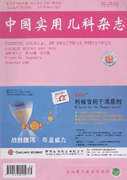Abstracts:Objective Different diagnostic methods of biliary atresia (BA) and infantile intrahepatic cholestasis disease were investigated in order to find a simple, fast,practical,economic and non invasive differential diagnostic method. Methods A total of 584 cases of infantile cholestasis were collected from May 2006 to June 2012 for persistent jaundice,pale yellow or white shit who lived in Department of Pediatric Digestion and Infection, Tongji Hospital, Tongji Medical College, Huazhong University of Science & Technology(HUST). Seven methods including clinical diagnosis,blood biochemical tests, liver and gallbladder ultrasonography, dynamic continuous duodenal liquid bile check, nuclide hepatic imaging, magnetic resonance imaging and histology were applied for differential diagnosis and the results were analyzed. Results The correctness of clinical diagnosis method was 74.5%, sensitivity 81.6%,specificity 69.9%; liver size: 49.0%,89.0%, and76.9%; stool color:83.2%,96.1% and96.7%;blood total bilirubin:63.0%,93.1%and91.2% ; serumγ-GT:79.7%, 71.1%and78.7% ; dynamic duodenal liquid color check:93.3%,91.7% and92.7%; bile acid of duodenal liquid:97.8%,100.0% and 100.0%;B graphy :89.7%,91.7%and94.3%;porta fibre block check:72.1%,29.4%and 68.7%;nuclide hepatic imaging :60.5%,100.0% and 100.0%;MRCP:88.3%,96.5%and94.4%;liver pathology :97.4%,98.2% and 94.9%. Conclusion Differential diagnosis in 1 week can help differentiate biliary atresia from infantile intrahepatic cholestasis. B-ultrasonography and dynamic duodenal fluid test are simple, fast practical,economic and noninvasive as differential diagnostic methods.

